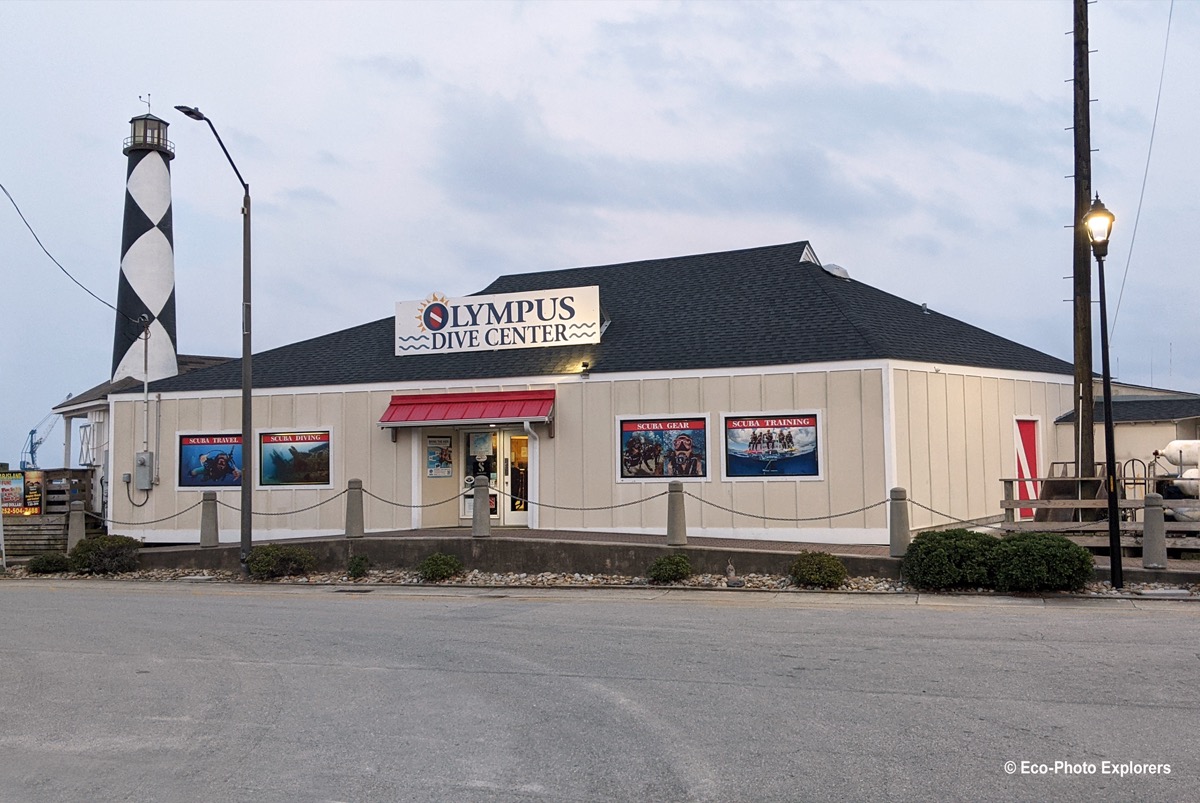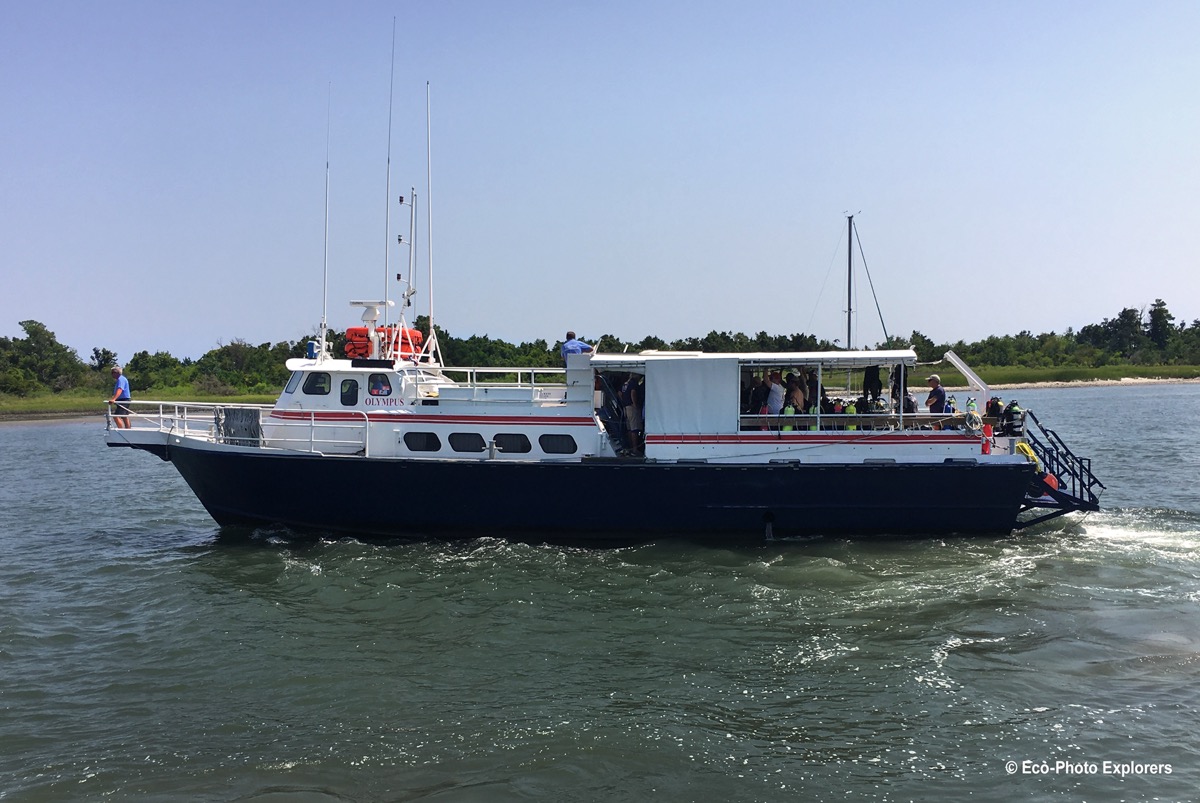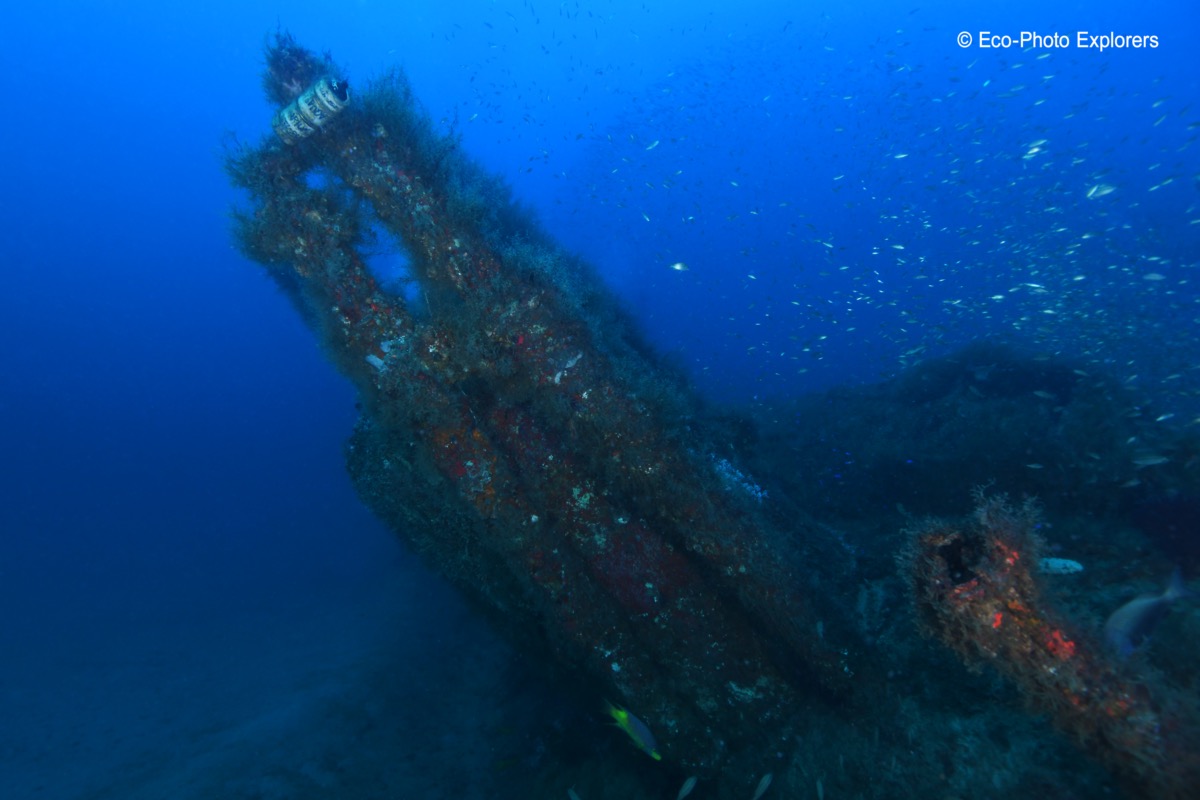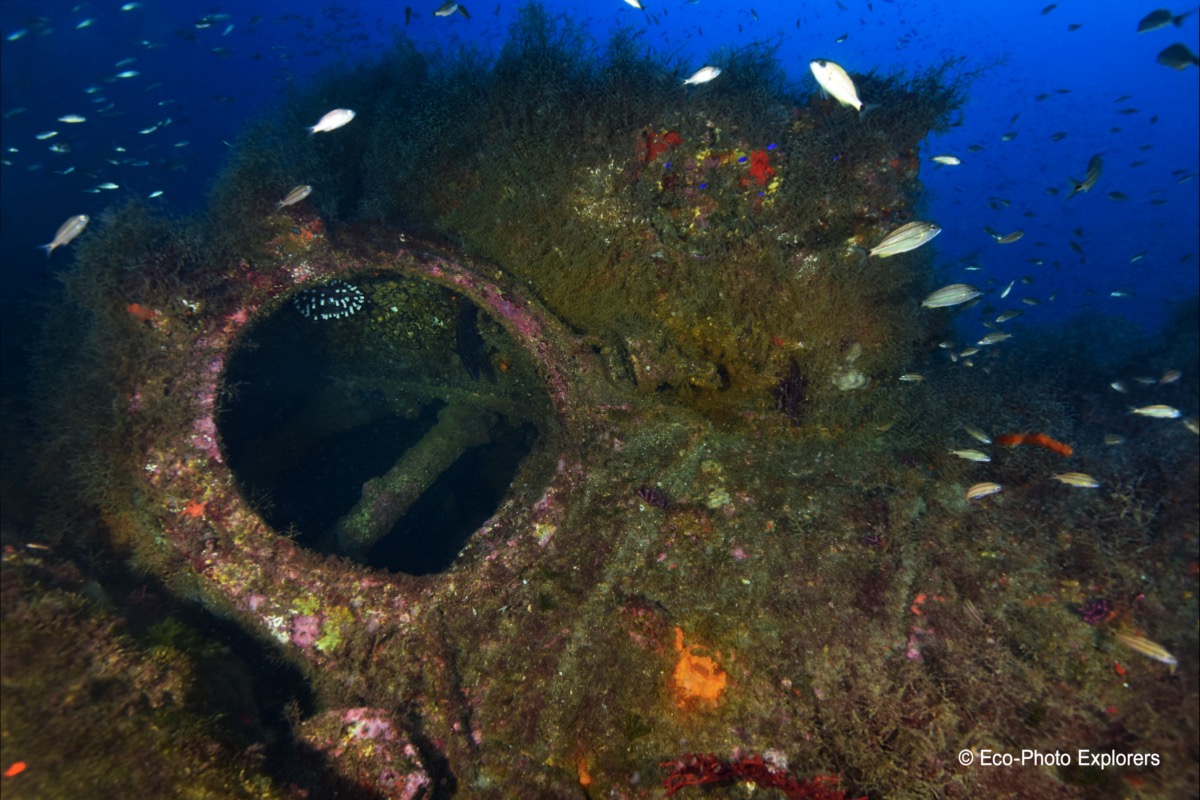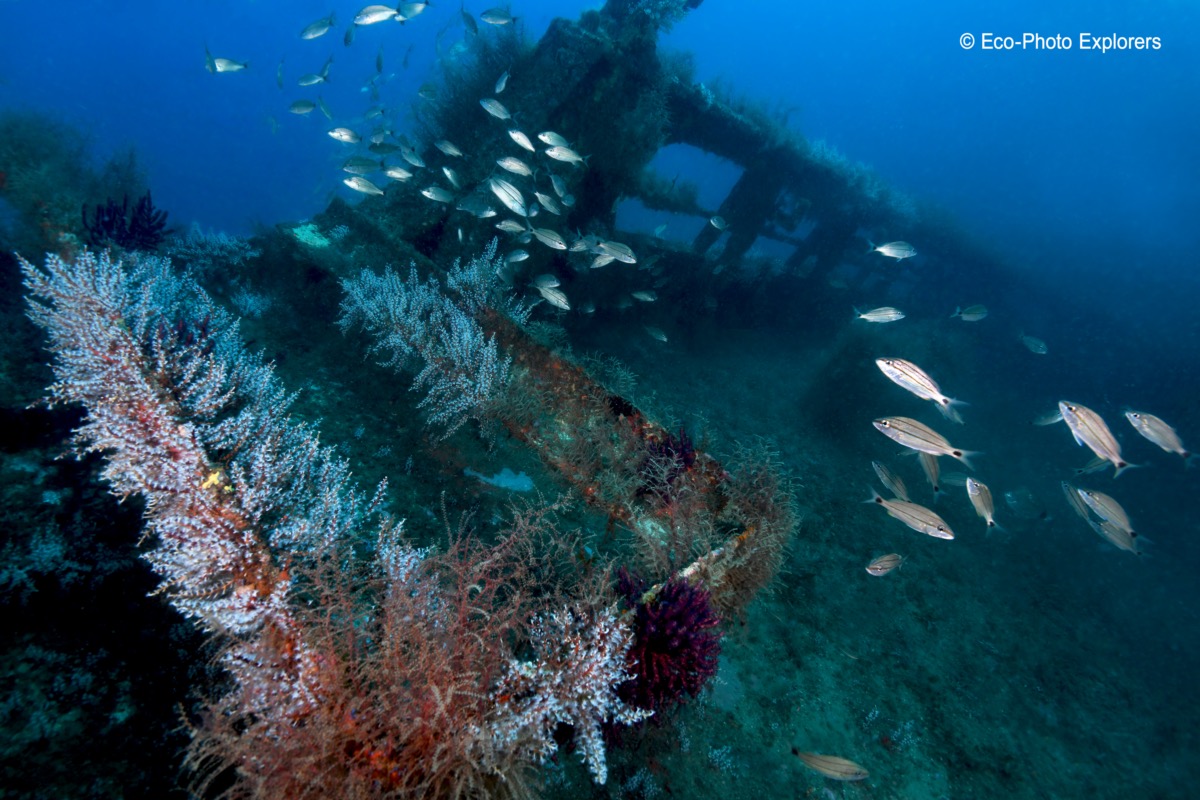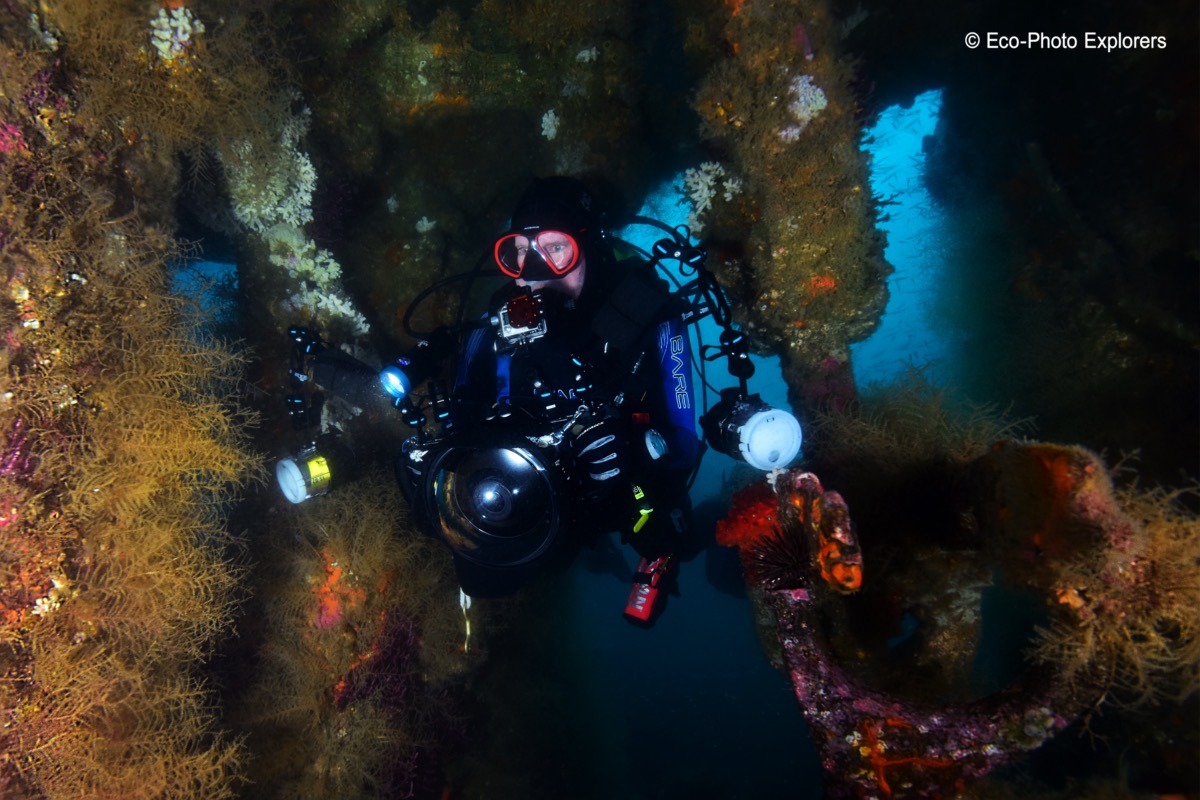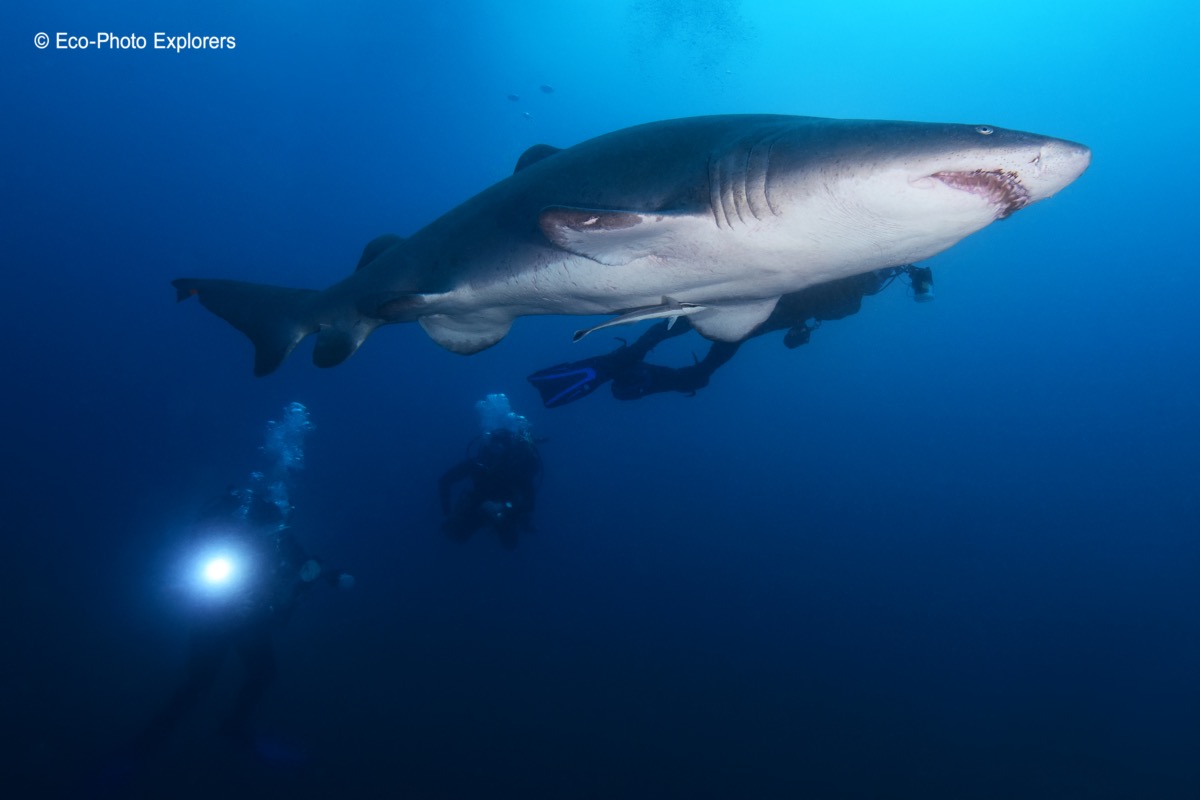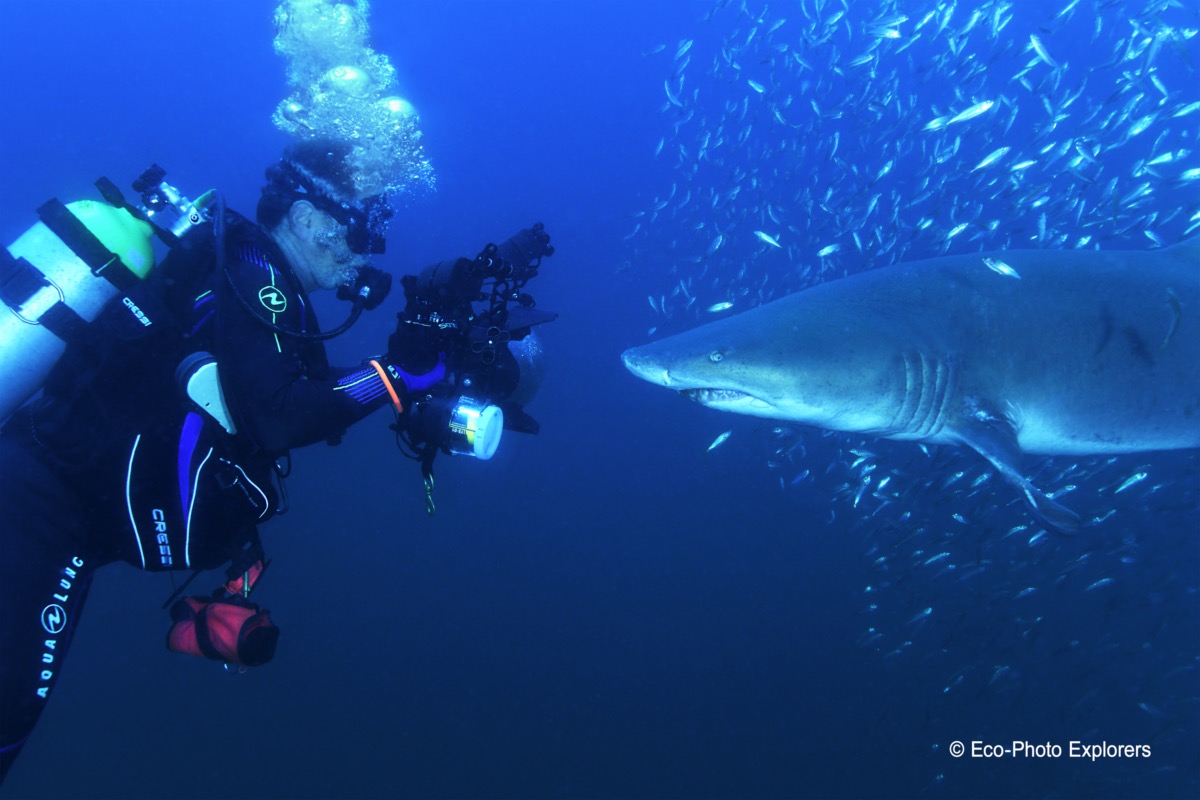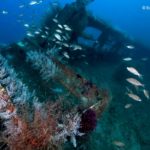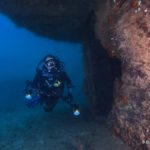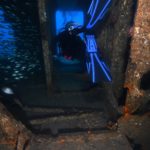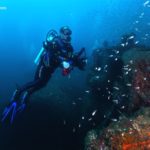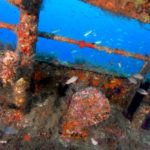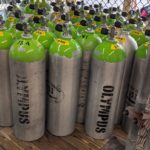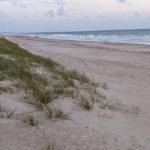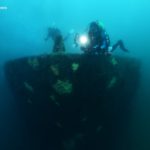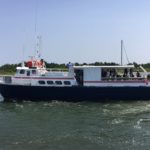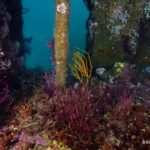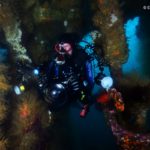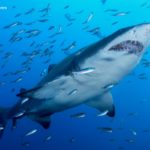The waters off North Carolina’s Atlantic coast are a veritable treasure trove of history and adventure. Ocean currents from the north and south collide here, and treacherous shoals, capricious winds and shifting sands often make this section of the Atlantic a dangerous place. Combine these conditions with the rich, but often tragic, history of armed conflict in these waters and you get an underwater museum of shipwrecks that is both fascinating and challenging for SCUBA divers from all over the world.
Text and Photography by Michael Salvarezza and Christopher Weaver (Eco-Photo Explorers)
Our expedition to the Outer Banks was centered on the waters near Cape Lookout with the objective of exploring some of the iconic wrecks in this area while also photographing the aggregations of Sand Tiger Sharks that are known to occur here. Our journey took us to the seaside community of Morehead City, a short drive from the Coastal Carolina Airport in New Bern. We would be diving with the Olympus Dive Center, one of the pioneering outfits for shipwreck exploration in this region.
Our first trip out gave us an early introduction to the unpredictable nature of these waters. Despite sunny skies and light winds, a storm system to the south was throwing up 4-5 foot waves at very short intervals. Rather than fight the sea, we ended up diving on the wreck of the Indra, one of several inshore wrecks that offer a good alternative when the offshore conditions make diving too difficult.
Although Indra was sunk intentionally as part of North Carolina’s artificial reef program on August 4, 1992 in 65 feet of water about 10 miles off Emerald Isle, she is a ship with some history. USS Indra was an Achelous class landing craft repair ship, first commissioned on October 2, 1945, that eventually saw action in the Vietnam War. She participated in two counteroffensives in 1968, earning her two battle stars.
She is 328 feet long and the highest part of the deck rises 20 feet off the bottom to a depth of about 45 feet. On our dive we had visibility of about 20 feet with water temperatures of 78 degrees. The inshore wrecks here usually do not have as good visibility as offshore but with 20-foot visibility we were still able to gain a good perspective on the wreck.
The Indra is lying upright and mostly intact. We explored the bow section first, instantly surprised to see a school of Atlantic Spadefish hanging around the lee side of the structure. Afterwards, we made our way the length of the wreck, stopping to photograph some of the marine life along the way. For shipwreck divers who are interested in history, it’s hard not to reflect on the past as you swim over the remains of a ship on the bottom. Lying in quiet repose, the Indra had once traversed the Panama Canal, operated in China and saw action in Southeast Asia in Vietnam. We offered a nod of respect before heading up the anchor line to end the dive.
One of the most iconic wrecks in this area is the wreck of the U-352, a German U-boat lost during the second World War. Very high on the list of our objectives, we were happy when the Captain announced we would be going to this site the next day. Olympus Dive Center does not publish a set schedule of wrecks and each day’s destination is determined that morning based on the prevailing conditions. Arriving at the dock at 6am to check in, set up gear, analyze Nitrox tanks and prepare for the day’s dives always comes with some suspense until the destination is revealed. Today we were in luck!
The U-352’s story starts in May 1941 when the German military built the first of the Type VIIC U-boats with more fuel capacity and torpedoes than their predecessors. This gave the submarines greater range and made them more lethal.
The U-352 was commanded by Capt. Hellmut Rathke, and he and the 45-man crew immediately began preparations for operations in the Atlantic. On May 9th, 1942, the submarine found itself off Cape Lookout searching for merchant ships and convoys. Soon, the silhouette of a ship appeared and the U-boat, thinking it had spotted a merchant ship, attacked by firing one torpedo.
But to the dismay of Capt. Rathke, they had fired on Coast Guard Cutter Icarus. The torpedo missed the target and Icarusimmediately responded with a flurry of depth charges. The U-352 was immediately damaged beyond repair. Surfacing, the captain ordered the crew to abandon ship and 34 crewmembers were taken aboard the Icarus. The rest had been killed. The submarine soon descended below the waves for the final time.
The U-352 was the first German submarine sunk by a Coast Guard vessel in WWII and would remain lost to the Atlantic until 1975 when it was discovered by George Purifoy and several friends. Purifoy is the founder of the Olympus Dive Center in Morehead City.
On this day, we descended through clear, warm Gulf Stream water, reaching the wreck in 115 feet of water. With visibility exceeding 50 feet we easily navigated the cigar-shaped wreck of the submarine. Our first stop was at the bow section, which is broken open revealing the two torpedo tubes located there. One tube is empty, telling the story of the single torpedo fired by the U-352, and the other still contains its torpedo in position.
The wreck is listing slightly to the side and this is evident when looking at the conning tower which is angled towards starboard. Further along the 218-foot wreck are some open hatches and the stern section with propellers and additional torpedo tubes.
Our dive was short, the dive time dictated by the depth, but we were fascinated by exploring this relic from the time when these waters were one of America’s battlefields in World War II.
Our next stop was the wreck of the United States Coast Guard Cutter SPAR, which is an acronym for the Coast Guard motto “Semper Paratus, Always Ready.”
SPAR is another of the North Carolina artificial reef wrecks, but also one with an important history.
She was launched November 2, 1943 and immediately helped in the war effort by supporting anti-submarine warfare during convoy duty off the coast of Brazil. But it was later, after the war, when she achieved some notable status.
It was in 1957 when SPAR conducted oceanographic operations through the Northwest passage. The culmination of this assignment occurred when the Coast Guard Cutters STORIS, BRAMBLE, and SPAR became the first vessels to circumnavigate the North American continent.
Her impressive history was expanded in 1966 when SPAR logged over 17,000 miles by visiting ports in Iceland, Norway, Denmark, Germany, and Ireland while conducting an oceanographic charting expedition in the Northern Atlantic.
She received a number of awards, and SPAR was later recognized by Vice Admiral Paul Welling, Atlantic Area Commander, as “The cutter with the most gold” in the Atlantic Fleet.
A class “C” buoy tender with an overall length of 180 feet, the SPAR was sunk as an artificial reef off the coast of Morehead City in June 2004. The wreck sits in 110 feet of water but rises to a depth of 85 feet.
Descending to the wreck, we swam through clouds of baitfish before reaching the wreck near the stern superstructure. The SPAR sits upright and is a very picturesque wreck. With good visibility, water temperatures hovering near 78 degrees and a minimal current, the dive was stress free. We first explored the bridge section, and here we find opportunities to penetrate the wreck. Inside the bridge, we found a small group of Spadefish as well as some colorful Butterflyfish flitting through the hallway.
Much of the wreck remains intact and swimming along staircases and open hatches evoked images of what life was like aboard the vessel as she plied the Northwest Passage. We swam forward, towards the bow, and spotted a few Sand Tiger Sharks but they were not very close and kept their distance. An open hatch in the deck beckoned and we descended into a cargo area, empty now expect for some small pipes and machinery. The silt from almost two decades of submersion has built up and good buoyancy keeps it from stirring.
Once at the bow, we swam a distance off the wreck to look back and gain a view of the vessel, imagining what it was like while underway. The SPAR is now on final duty.
These waters are sometimes referred to as “The Graveyard of the Atlantic” for good reason. There are many other ships lying on the sea floor here. The Schurz was originally a 255-foot German gunship named the SMS Geier that was built in 1894, eventually seized by the United States during the first World War, and sunk on June 21, 1918 in 110 feet of water when she collided with the SS Florida. The Papoose is a 412-foot tanker that was sunk by a German U-Boat in World War II and rests upside down in 125 feet of water. The Aeolus is 409 feet long Artemis-class attack cargo ship that was sunk intentionally in 1988 and today lies at a depth of 110 feet.
Our final wreck dive was to the wreck of the CaribSea. She was built in 1919 in Duluth, Minnesota and classified as an ocean-going cargo ship. Originally named Lake Flattery this 251-foot long vessel carried freight along the east coast from Caribbean ports to New York and Philadelphia. But it was the evening of March 10th, 1942 when the CaribSea, inbound to Virginia from Cuba with a cargo of 3,600 tons of manganese ore, was attacked and sunk by the U-158, which mistook the vessel for a Coast Guard Cutter. Twenty-one crew members were killed.
During the war, the Navy and the Coast Guard depth-charged the wreck repeatedly to reduce its profile so enemy submarines could not use the wreck as a hiding place. It was also subsequently wire dragged after the war. The result is that the wreck, which lies in 90 feet of water, is badly broken up. The most recognizable parts of the wreck are the bow section and the boilers that are located midship. The rest is a jumble of confusing wreckage.
But the CaribSea has another treasure to reveal and as we descended the anchor line this became immediately apparent. As we gazed down the line we could see the hulking forms of Sand Tiger Sharks circling above the wreck. In fact, our descent to the wreck went right through them!
Dozens of Sand Tiger Sharks, ranging between 6 and 10 feet in length, seem to have taken up residence here. The sharks are ferocious looking with mouthfuls of raggedy teeth but they are, in fact, harmless. Still, watching these sharks languidly swim by, around and towards divers is a real thrill. And while the guidance is to not touch the sharks, the sharks may have been absent from that particular briefing because, on occasion, they would swim right up to us as if they didn’t even see us or care that we were there.
Swirling around the wreck, and the sharks, are massive schools of shimmering bait fish. Like a flowing river, they all move in unison and these fish attract other predators. Slicing through the clouds of silvery fish are Jacks, intent on finding a meal. Divers can actually hear the sound of the school of panicked fish darting through the water, a kind of subtle swishing sound. The baitfish could often be seen swirling around the sharks themselves, apparently content with the relative safety the shark’s presence provides them.
On our dives on the CaribSea, the thermocline was about 60 feet. Above that, warm clear Gulf Stream water could be found. Below this, and down to the wreck, the colder waters of the Labrador Current flowing from the north brought limited visibility. The sharks seemed to be comfortable hanging out right above the thermocline, although some could be seen swimming right on the wreck itself at depth. To photograph the sharks, divers need only position themselves in the right area, or on a high point of the wreck, and wait for the sharks to approach. Generally, they swim in a predictable pattern and if you miss the opportunity to get a good photograph patience will pay off with another opportunity shortly. Hanging in the water column near the thermocline surrounded by dozens of sharks was a definite highlight of our journey.
In the end, our dives in North Carolina met all of our objectives and we departed with full memory cards and loads of memories. The historical significance of these waters cannot be understated and there are other gems to be found and explored here. For example, nearby, only a mile from shore, is the wreck of the Queen Anne’s Revenge, the flagship of the fleet of the infamous pirate Blackbeard. The wreck site is a jumble of artifacts and diving the wreck requires special permits as the archeological recovery of the wreck is ongoing.
And to the north, near the Cape Hattaras Lighthouse and the Diamond Shoals is the wreck of the USS Monitor. This was a Civil War era “Ironclad” that fought a famous Naval battle with the CSS Virginia, from the Confederate Navy, that would change the course of Naval history. The ship lies in 240 feet of water and is now a designated United States National Marine Sanctuary, the first of its kind. Diving the Monitor also requires a permit as well as technical diving expertise. Today, there are plans to expand the National Marine Sanctuary to include a number of the other historically significant shipwrecks in these waters, some of which we visited on this expedition.
Diving the waters off North Carolina represents a dive through history, with a bonus of impressive looking Sand Tiger Sharks. We are already planning our return visit!
Fact File:
Getting there:
Fly to Charlotte, North Carolina on Delta (through New York), United (through Newark, New Jersey) or Lufthansa (through Munich). Connect with regional flights to New Bern, North Carolina (Coastal Carolina Airport). Morehead City is a 40-minute drive from New Bern.
Diving and Accommodation:
Chris and Mike stayed at the Hampton Inn, Morehead City. Room rates from USD $195 per night.
Diving was arranged through Olympus Dive Center (https://www.olympusdiving.com). Two-tank offshore wreck trips cost USD $145 per diver. Tanks are not included in the charter fee. Nitrox tanks are $20.
When to go:
Dive trips are run every day of the week between mid-May and October. Trips go out every weekend in November, March and April. Ocean conditions make diving during the winter months very unpredictable. Summer months are usually hot and humid, autumn and spring are drier. Late summer and autumn bring occasional tropical storms and hurricanes.
Money:
US Dollars
Health:
At the time of this writing, all air passengers coming to the United States, including U.S. citizens and fully vaccinated people, are required to have a negative COVID-19 test result no more than 3 days before travel or documentation of recovery from COVID-19 in the past 3 months before they board a flight to the United States. Facemasks are not required in shops, restaurants or on the dive boats in North Carolina but this situation can change at any moment. Facemasks are required in the airports.
- Mike Salvarezza photographs a Sand Tiger Shark from close range
- The USCG Spar wreck is colorfully adorned with marine life
- Mike Salvarezza explores the wreck of the USCG Spar
- Divers enjoy swim-throughs on the USCG Spar
- The USCG Spar has become a thriving artificial reef
- Mike Salvarezza explores the wreck of the CaribSea
- Railings on the USCG Spar Wreck
- The Olympus Dive Center in Morehead City
- Olympus Dive Center is a full service dive operation
- North Carolina’s Crystal Coast
- Christopher Weaver at the bow of the Indra
- The Olympus is a comfortable and safe dive vessel
- Corals growing on the wreck of the Indra
- Christopher Weaver inside the wreck of the CaribSea
- The conning tower hatch of the U-352
- Sand Tiger Sharks are often found on several North Carolina wrecks
- Sand Tiger Sharks look fearsome but are harmless
- Sand Tiger Sharks often come in for a close look

